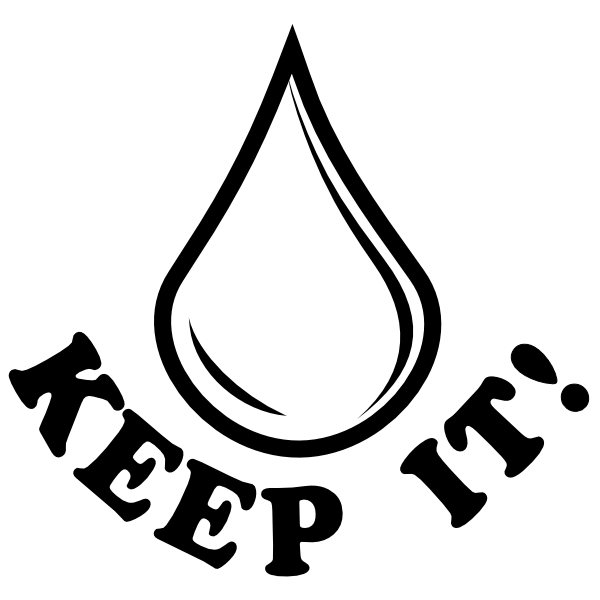August 2022
Peripartum Medical Conditions
The need to pump and dump with common peripartum maternal medical conditions is addressed in this section. In general, with conditions that require antibiotic use, most antibiotics are not an absolute indication to pump and dump. For more information on specific antibiotics, see the section on Antibacterial Agents. Additionally, infants should be monitored for allergic reactions and intolerances such as changes in gastrointestinal function while their lactating parent is on antibiotics.
For detailed more information and references on specific medications, please refer to LactMed, e-lactancia, Infant Risk, or Mother to Baby.
Cesarean Wound Infection
There is no absolute indication to pump and dump with cesarean wound infections in birthing parents. Generally, the antibiotics used to treat cesarean wound infections are not absolute indications to pump and dump. For more information on specific antibiotics, refer to Antibacterial Agents.
Endometritis
There is no absolute indication to pump and dump with intraamniotic infection (chorioamnionitis) or postpartum endometritis. These conditions usually require IV antibiotics. Current management options for endometritis and chorioamnionitis can be found in the ACOG Committee Opinion (1).
- Lactating individuals who are admitted to the hospital for endometritis treatment and require separation from their infant should have access to a pump, receive counseling regarding pumping frequency to maintain milk production, and be educated on compatibility of antibiotic use and breastfeeding.
- Parents should be counseled to monitor infants for rash and for possible effects on the gastrointestinal flora, such as diarrhea or candidiasis (thrush, diaper rash) while the lactating parent is on antibiotics. Antibiotics typically used to treat endometritis are not an absolute indication to pump and dump with rare exceptions. For more information on specific antibiotics, see the section on Antibacterial Agents.
UTI & Pyelonephritis
Urinary tract infections and pyelonephritis are not absolute indications to pump and dump. Parents should be counseled to monitor infants for rash and for possible effects on the gastrointestinal flora, such as diarrhea or candidiasis (thrush, diaper rash) while the lactating parent is on antibiotics. For more information on specific antibiotics being used for a patient, see the section on Antibacterial Agents.
Kidney Stones
Kidney stone treatment often includes pain control and medical expulsive therapy. Kidney stones are not an absolute indication to pump and dump.
- Nonsteroidal anti-inflammatory drugs (NSAIDs), such as ibuprofen, are commonly used for the management of kidney stones. Some individuals may also use opioids, which should be used with caution and close monitoring of the infant for drowsiness, respiratory depression, and other side effects. For more information on specific pain medications and classes of medications, see the section on Pain Medications.
- Medical expulsive therapy may include medications such as tamsulosin/Flomax or nifedipine. Nifedipine has more available data than tamsulosin in breastfeeding individuals. Tamsulosin has high binding to plasma proteins so this medication would likely have low milk transfer. There is no absolute indication to pump and dump with either of these medications.
Postpartum Hemorrhage
Postpartum hemorrhage (PPH) is a risk factor for delayed secretory activation and low milk production (2) so these birthing/lactating individuals should be followed closely. Birthing parents may have PPH in the immediate postpartum period or it may be delayed 24 hours to 12 weeks postpartum (3). PPH is not an absolute indication to pump and dump although birthing parents who wish to lactate/breastfeed and experience PPH should be monitored closely for milk production and provided additional support and close follow-up.
Medications used to treat postpartum hemorrhage most commonly include a combination of oxytocin, misoprostol (Cytotec), carboprost (Hemabate), methergine, and tranexamic acid (3) and use of these medications (other than special considerations for methergine) are generally not an absolute indication to pump and dump.
-
- Methergine: The risk of breastfeeding is likely low while on short courses of methergine during the colostral phase of lactation. With longer courses or higher doses, infants should be closely monitored for adverse events including tachycardia, vomiting, diarrhea, and agitation and decisions to continue breastfeeding or providing one’s milk should be made with shared decision making with the infant’s family. Additionally, there is a theoretical risk to milk production in the immediate postpartum period due to a decrease in serum prolactin (4). While parents should be counseled on the risks to milk production and to the infant, there is no absolute indication to pump and dump with short courses of methergine during the colostral phase of lactation and shared decision making should be used with the use of this medication. Due to the concerns about side effects in the infant, if the decision is made to disrupt breastfeeding while temporarily on methergine after milk volume has increased, the lactating parent should pump and dump until 12 hours after the last dose of methergine.
Gestational Hypertension/Pre-eclampsia (PEC)/Eclampsia
Pre-eclampsia (PEC) and eclampsia can increase the risk for lactation challenges including low milk production so parents should be provided with close follow-up and lactation support if they have PEC/eclampsia (1). PEC may present during pregnancy and is often an indication for early delivery. It may also be diagnosed in the postpartum period and may require hospital admission. The treatment for these conditions includes blood pressure control, seizure prevention/treatment, and supportive care (5). PEC and eclampsia are not absolute indications to pump and dump.
- Anti-hypertensives: The most common antihypertensives used in these conditions include labetalol, nifedipine, and hydralazine (5). These medications are not absolute indications to pump and dump. For more information on these anti-hypertensives and other anti-hypertensive medications, see the section on Blood Pressure Medications.
- Magnesium sulfate: This medication is not an absolute indication to pump and dump. The breastfed infant’s serum magnesium is not expected to be affected when given in the postpartum period. If given antepartum (prior to delivery), patients should be counseled on the potential for delay in secretory activation (6), as well as potential to affect an infant’s ability to breastfeed immediately after birth due to infant hypotonia (7, 8).
References
- Intrapartum management of intraamniotic infection. ACOG Committee Opinion. Number 712. August 2017. https://www.acog.org/clinical/clinical-guidance/committee-opinion/articles/2017/08/intrapartum-management-of-intraamniotic-infection. Last Accessed Aug 5 2022.
- American College of Obstetricians and Gynecologists. Breastfeeding Challenges. ACOG Committee Opinion No 820. Obstet Gynecol February 2021. https://www.acog.org/clinical/clinical-guidance/committee-opinion/articles/2021/02/breastfeeding-challenges. Last Accessed Aug 5 2022.
- American College of Obstetricians and Gynecologists. Postpartum Hemorrhage. ACOG Practice Bulletin No 183. Obstet Gynecol October 2017. https://www.acog.org/clinical/clinical-guidance/practice-bulletin/articles/2017/10/postpartum-hemorrhage. Last Accessed Aug 5 2022.
- Drugs and Lactation Database (LactMed) [Internet]. Bethesda (MD): National Library of Medicine (US); 2006–.methylergonovine [updated 2018 Oct 31.] Available from: https://pubmed.ncbi.nlm.nih.gov/30000401/ Last Accessed Aug 5 2022.
- American College of Obstetricians and Gynecologists. Gestational Hypertension and Preeclampsia. ACOG Practice Bulletin No 222. Obstet Gynecol June 2020. https://www.acog.org/clinical/clinical-guidance/practice-bulletin/articles/2020/06/gestational-hypertension-and-preeclampsia. Last Accessed Aug 5 2022.
- Haldeman W. Can magnesium sulfate therapy impact lactogenesis? J Hum Lact. 1993;9:249–52. DOI: https://doi.org/10.1177/089033449300900426.
- Riaz M, Porat R, Brodsky NL, et al. The effects of maternal magnesium sulfate treatment on newborns: A prospective controlled study. J Perinatol. 1998;18:449–54.
- Rasch DK, Huber PA, Richardson CJ, et al. Neurobehavioral effects of neonatal hypermagnesemia. J Pediatr. 1982;100:272–6. DOI: https://doi.org/10.1016/s0022-3476(82)80654-9.

